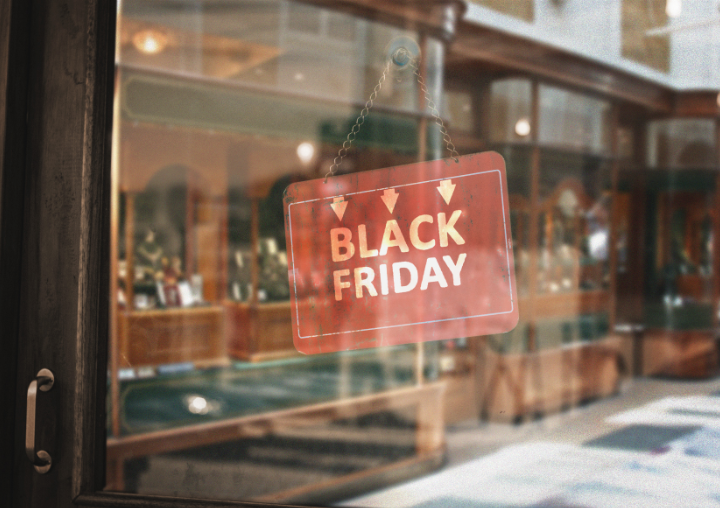
Holiday Trends
Resilient Payments Ensure Holiday Success
A resilient payment system ensures you capture every sale and maintain customer trust throughout the busiest shopping season of the year.

Black Friday and Cyber Monday 2025 will reward Canadian merchants who plan early, price with care and keep checkout simple. Shoppers want value without hassle, and they will move on fast if a store feels slow or confusing. Clear offers, reliable shipping and a quick path to pay are the levers that matter most. The teams that align around these basics will protect their margins and grow sales during the busiest weeks of the year.
You do not need an enterprise budget to get this right. You do need a fast site, trustworthy product information and payment options that match how Canadians prefer to pay. Pair that with honest shipping timelines and a service plan that puts customers first. The result is fewer refunds, higher conversion and repeat buyers who remember a smooth holiday experience.
Black Friday 2025 falls on Friday, November 28, and Cyber Monday 2025 lands on Monday, December 1. That timing compresses the season into a tight window where shoppers are primed to buy, so stock, staffing and site readiness need to peak across those four days. Expect early promotions to start well before the official dates, but plan your biggest push for that long weekend. Treat these dates like a project milestone and lock key decisions now to avoid last-minute chaos.
The long weekend will also favour merchants who make it easy to compare, check store pickup options and pay on mobile without friction. Many Canadians will shop earlier this year, then finish their lists during Cyber Week when they see stronger offers and firm shipping cutoffs. Plan for quick support replies across chat, email and social to save wavering baskets. Small fixes to search, filters and checkout speed can unlock meaningful revenue when traffic spikes.
Holiday shopping trends in 2025 point to earlier research, sharper price sensitivity and higher expectations at checkout. Canadians are stretching budgets and comparing harder, yet they still want moments of joy and small treats. Digital research is shaping more final decisions, and that means product content and trust signals carry real weight. Merchants that connect price, proof and convenience will win share from larger rivals.
Many Canadians have already started, or will start, shopping well ahead of late November to find value and avoid shipping stress. A strong share plan purchases before November, which means you should schedule teaser offers earlier and build remarketing that brings those browsers back for your best deals. This shift rewards consistent communication rather than one splashy day. Run pricing tests in early November to determine which thresholds have the most impact before Black Friday arrives.
Shoppers are also researching more deeply across search, social and video while they compare total cost, delivery speed and return policies. That means your product pages need current images, size guides, real reviews and clear shipping terms. If you sell variations, surface the right fit or colour first based on popularity and stock. The cleaner the decision, the fewer carts you lose to hesitation.
Budgets are under pressure, and price leads as the top purchase driver for most Canadians this season. Surveys show planned gift spend around the same level as last year, yet shoppers will wait for sales, compare across sites and pick retailers that show transparent pricing. At the same time, many people still set aside money to treat themselves when the right deal appears. That blend of caution and small indulgence should shape your offer mix.
Gift cards remain a strong choice, and they help you capture revenue even when customers are unsure which item to pick. Promote cards with a modest bonus or bundle them with small add-ons to lift average order value. Keep descriptions plain and redemption steps simple to avoid support tickets. Make sure cards are easy to find in site search and in your main menu.
Digital payments account for the vast majority of transactions in Canada, and contactless behaviour sets expectations for speed online as well. Customers expect one-page checkout, address auto-complete and mobile forms that do not fight back. Offer digital wallets and faster pay methods so repeat customers can finish in a few taps. Every extra field you remove is a few more baskets you will keep.
Performance matters just as much as features. Compress images, cache pages and watch third-party scripts that slow downloads on older phones. Aim for a clean path from product page to pay with no surprises during shipping selection. If you must step up security, do it behind the scenes and only challenge risky orders.
Installment options can help shoppers manage budgets during the holidays, and interest in these plans continues to expand in Canada. If you offer buy now, pay later, keep disclosures clear and display the per-period amount near the price to reduce sticker shock. Combine that with honest shipping fees and a fair return window to lower anxiety at checkout. Clarity sells when people feel financial pressure.
Returns policies also sway decisions in a season where gifts might not fit or suit. Spell out extended return dates for holiday purchases and show them on product pages rather than hiding details at checkout. A painless return process can lift conversion even if few people use it. It also reassures gift buyers who need flexibility across December and early January.
Canadian shoppers will keep hunting for value while asking for faster checkout and trustworthy policies. Early research and price comparisons will shape which carts make it to the finish line. Payments and shipping promises will play an outsized role in final decisions. Ground your plan in these holiday shopping trends to make better calls on offers, content and timing.
Merchants that plan their campaigns on a tight content and offers calendar will convert more traffic at a lower cost. Start with simple value stories that match how your customers shop, then layer urgency once shipping cutoffs approach. Treat loyalty members with early access so they feel seen, not blasted. Keep testing small changes so you can scale only what works.
Strong campaign structure prevents the scramble that often hits during Cyber Week. A steady rhythm of offers builds habit without training customers to wait for the last minute. Clear copy beats clever copy when people skim on phones. Keep the focus on value, speed and confidence to lift conversion.
Holiday shipping deadlines are a decision point for shoppers who need gifts to arrive on time. Customers reward merchants who publish clear send by dates by service level and region. People also expect honest delivery windows when storms or labour issues affect carriers. The more specific you are, the fewer angry messages your team will face.
For domestic parcels, the national postal service has published send-by guidance that moves earlier as distance increases. For many addresses, regular parcel services suggest mid-December cutoffs for national shipments, with express options extending closer to December 23 for local and regional delivery. If you rely on standard service, set your store cutoff a few days earlier to create a buffer. Publish these dates on your site header, cart and order confirmation emails so no one misses them.
Do not forget non-parcel items such as cards, which have their own timing. International cards and light packets require even earlier send-by dates than domestic parcels. If you sell gift subscriptions or digital products, feature them beside your deadlines as a stress-free option. That simple swap saves a sale when shipping windows close.
Many major couriers set last days to ship for delivery by December 24 that range from mid-December for ground to December 23 for overnight services to most metropolitan areas. If you offer faster tiers, show the exact last purchase date and time for each option so buyers see their choices with full context. Your warehouse cutoffs may be earlier than those of your carrier, so establish clear internal rules and adhere to them. A countdown banner tied to the shopper’s postal code can reduce guesswork and push timely orders.
Also account for pickup schedules. If your daily pickup happens early afternoon, state order time cutoffs that leave enough margin for packing and handoff. Where pickup is not guaranteed on weekends, warn customers that a Friday afternoon order may not be available on Monday unless a special dispatch is offered. Clarity here reduces weekend support load.
Cross-border parcels have varied timelines based on service speed and customs clearance. Economy tiers often require ship dates in the middle of December, while premium express options remain viable until December 22 or 23 for many destinations. Remind buyers that customs can add days and that delivery to remote zip codes may need extra time. If you sell to the United States at volume, preprint customs forms and validate addresses upfront to cut errors.
Communicate currency, duties and taxes before checkout so shoppers know the full landed cost. Surprise fees at delivery lead to refused packages and refunds that cost more than they save. If you can offer prepaid duties, test it on top sellers and watch completion rates. Many customers will pay a small premium for certainty.
Customers want dates, not guesswork. Put a small notice with the customer’s estimated delivery date on product pages, then restate it in the cart and at checkout. Mirror the same message across email, paid media and store signage to avoid mixed signals. A short shipping frequently asked questions page helps reduce tickets and builds confidence in your process.
Keep contact channels staffed when deadlines approach. Many shoppers just want to confirm a delivery date or switch to pickup. Empower support to upgrade shipping or offer pickup where it solves the problem. Fast, human replies turn a shaky basket into a finished order.
Dates move, weather changes and carriers adjust capacity during peak weeks. Merchants that set earlier internal cutoffs and publish customer-facing dates that match carrier guidance will prevent disappointment. A clear plan for service alerts and simple pickup options reduces risk further. Tight communication builds trust when customers care most about timing.
Cyber Monday 2025 is a one-day sprint where small improvements to speed and clarity can have a big payoff. Offer guest checkout, auto complete and the fewest possible fields, then make payment options obvious on the first step. Digital wallets, debit, credit and installment choices should be visible without extra taps, since many shoppers are managing budgets more closely this year. Post order tracking and simple returns close the loop so buyers feel confident pressing pay.
Keep fraud controls smart but quiet. Use risk scoring to step up only suspicious orders so good buyers do not hit needless challenges. Show exact delivery dates by postal code and promote store pickup for last-minute gifts. If your queue builds, place a polite queue screen that saves the cart and keeps the buyer informed rather than making them refresh.
Peak season success often comes from operational basics that protect the customer promise. Build a daily standup across marketing, ecommerce, store and warehouse so issues get solved quickly. Assign a single owner for each step of the post-purchase journey from order confirmation to doorstep. When people know who decides, bottlenecks shrink and customers get answers faster.
On the floor, set up a clear area for online pickup in-store orders with signage that is easy to spot. Pre-pack popular items in standard boxes with scannable labels to cut minutes per order. Keep a small safety stock of shipping supplies to avoid last-minute runs when volume spikes. After the rush, analyze order cycle times so you can carry those gains into the new year.
Payment friction during peak weeks hurts revenue, so we focus on removing it. Moneris solutions bring fast checkout, strong security and real-time reporting together so you can move quickly without adding risk. We support online, in-store and mobile payments with consistent tools and a single view of your sales. That means fewer systems to juggle when your team has no time to spare. We also provide bilingual support across Canada so you can reach a person when you need help most.
We understand how tight holiday timelines can be for small and mid-sized teams. Our gateway, terminals and tap to pay options help you accept what customers prefer, while our fraud tools look for risk signals in the background to keep good buyers moving. You can offer recurring payments, tokenized cards and stored credentials that speed repeat purchases with less data entry. Funding that arrives on a reliable schedule improves cash flow for replenishment. When stakes are high, we work beside you as a trusted payment partner.
Holiday Trends
A resilient payment system ensures you capture every sale and maintain customer trust throughout the busiest shopping season of the year.

Holiday Trends
Plan early, simplify offers, connect channels and prepare payments so you capture demand and build lasting customer relationships through the season.

Holiday Trends
Retailers that prepare early, streamline checkout, connect channels, and protect uptime turn the biggest sales weekend into lasting revenue.

Holiday Trends
Black Friday was the top shopping day in 2024, driven by early promotions, mobile shopping, and regional spending shifts. Learn what small businesses should focus on in 2025 to plan better and sell smarter.